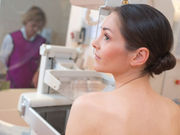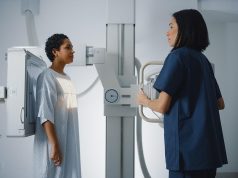Digital technology leads to increased abnormal interpretation and cancer detection rates
TUESDAY, Feb. 28, 2017 (HealthDay News) — Digital imaging has improved diagnostic capability of mammograms but the percentage of false-positives is up, too, according to a study published online Feb. 28 in Radiology.
Brian Sprague, Ph.D., associate professor of surgery at the University of Vermont College of Medicine in Burlington, and colleagues used information from six registries maintained by the Breast Cancer Surveillance Consortium, which is funded by the U.S. National Cancer Institute. The investigators evaluated results of 401,548 mammograms, reviewing data from 418 radiologists and 92 radiology facilities. The exams were conducted on 265,360 women.
The investigators found that 27.5 percent of the women who had a biopsy actually had cancer, compared to 31.5 percent in 2005. The breast cancer detection rate rose to 34.7 per 1,000 diagnostic mammograms from 2007 to 2013. That’s up from 25.3 per 1,000 noted in a 2005 report from the Breast Cancer Surveillance Consortium. The rate at which women were called back for a biopsy rose to 12.6 percent, up from 8.0 percent in the earlier report.
“Compared with performance during the screen-film mammography era, diagnostic digital performance showed increased abnormal interpretation and cancer detection rates and decreasing positive predictive values (PPVs), with less than 70 percent of radiologists within acceptable ranges for PPV2 and PPV3,” the authors write.
Two authors disclosed financial ties to G.E. Healthcare.
Copyright © 2017 HealthDay. All rights reserved.








